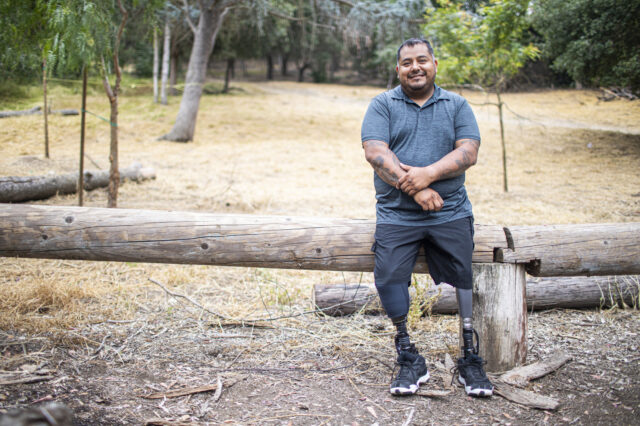Why Patients with Diabetes are More Prone to Amputations and How Plastic Surgery Intervenes

Approximately 34.2 million Americans have diabetes and approximately 88 million Americans have prediabetes, according to the Centers for Disease Control and Prevention’s National Diabetes Statistics Report 2020. On March 23, we recognize American Diabetes Alert Day to inform the public about the seriousness of diabetes and the importance of understanding the risks.
Harvey Chim, M.D., FACS, an associate professor in the division of plastic and reconstructive surgery at the University of Florida College of Medicine who works with patients who have diabetes, said people with diabetes are more susceptible to having amputations because they are prone to infection, such as gangrene, and often experience a loss of blood supply. They also have an increased chance of not healing well after minor injuries, which can result in complications that often lead to an amputation.
Chim explained that some people with diabetes have peripheral neuropathy, which is damage to the peripheral nerves in hands and feet. This increases the possibility of wounding themselves since they have numbness from nerve damage.
“Any small scratch or wound can become infected and this could lead to further complications,” Chim said. But if these wounds are treated promptly, amputation can be prevented.
“Sometimes patients with diabetes develop a disease that involves the small arteries in the feet or somewhere in the leg that causes ischemia, which is when the blood supply is cut off at the feet,” he added. This is what can lead to gangrene or other complications resulting in amputation.
Chim performs skin and nerve procedures on patients with diabetes, including skin grafts, local flaps or free flap procedures to cover wounds and prevent amputations. Free flaps, a procedure used for more severe wounds, involves taking tissue from somewhere else on the patient’s body and moving it to the wound site.
When needed, if the patient has neuropathy or a pinched nerve, Chim operates to remove pressure from the nerves. He can also redirect the cut nerves from an amputation to reduce the risk of formation of painful neuromas.
Before plastic surgery, patients with diabetes have to take a hemoglobin A1C test, which measures the amount of blood sugar attached to hemoglobin, so surgeons know if their diabetes is under control before the procedure. If the Hemoglobin A1C test results in an elevated number, it could lead to a high risk of complications from surgery.
“Patients have to keep their wounds clean and get their diabetes under control before surgery,” Chim said.
At UF Health Plastic Surgery and Aesthetics Center, we are fortunate to offer a range of surgical procedures for our patients with diabetes to give them the highest quality of life possible.
About the author
